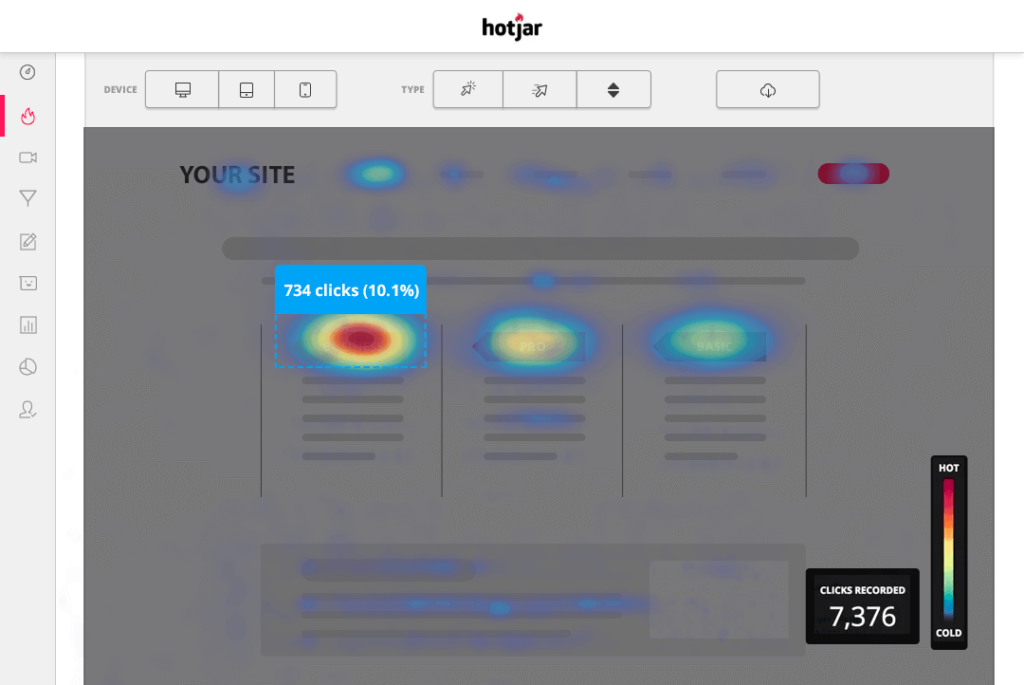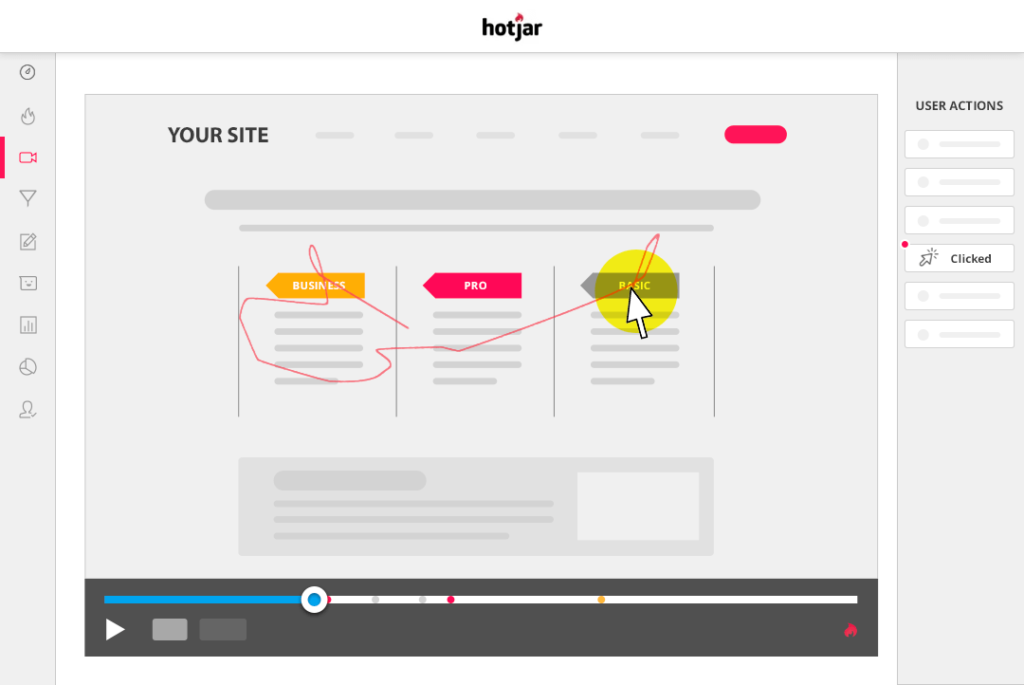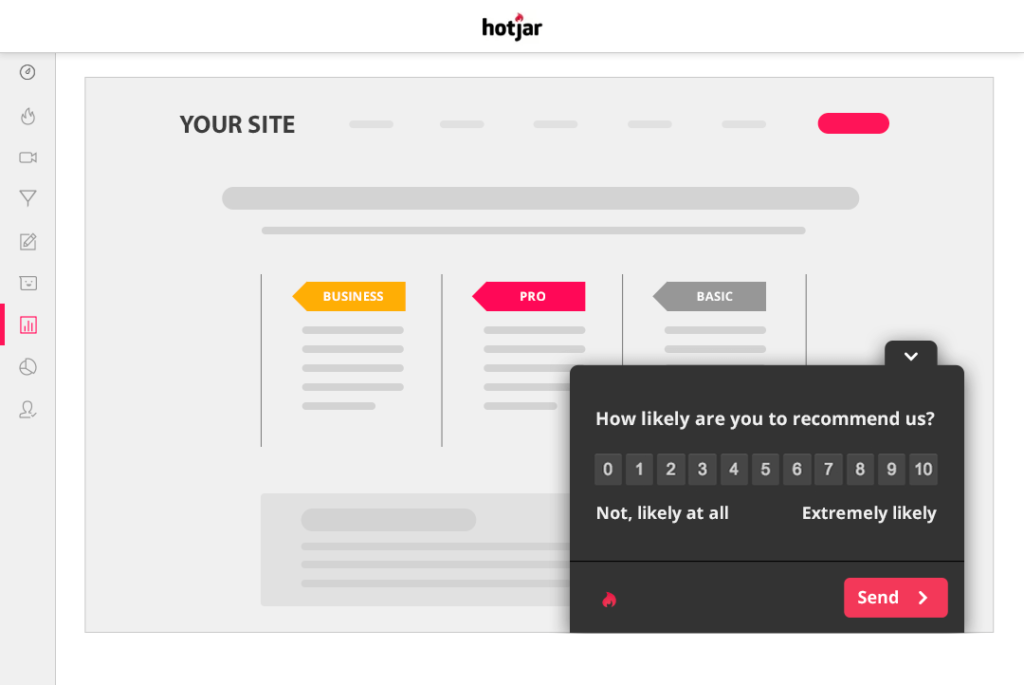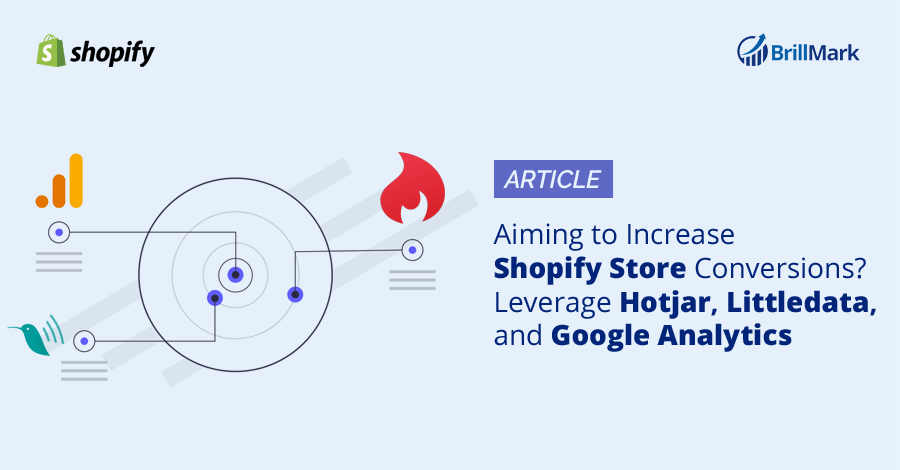If you’re familiar with running a Shopify store, you know that the most important goal is often increasing your store’s conversions. But consistently increasing conversions and revenue is a difficult challenge.
Improving the user experience is critical to this goal, whether from a lead-generation form, an in-store display, or a multi-stage sales funnel.
Even if you’ve found the information you need to know what changes to make, applying them is still difficult. If you’re looking for help on that second step, you’ve come to the right place.
We hope after reading this article, you’ll understand how to leverage each of the tools and the key features they offer to increase conversions in the best possible manner:
- Hotjar’s user behavior and response analytics tools
- Google Analytics
- Littledata
These tools will help you offer customers everything they need while increasing engagement and sales on your Shopify store.
Let’s dive into the details of each tool that can help you increase your Shopify store’s revenue.
Hotjar
Hotjar is a remarkable tool that displays your consumers’ online activities and opinions. It provides the “broader perspective” of how to enhance your website’s customer experience and productivity rates by integrating both analytics and review capabilities.
The analytics tools help monitor user behavior (by letting you see what users do), and the review tools allow you to “hear” what the customers are saying (by polling them with surveys).
Hotjar and Shopify
Hotjar is a serious contender for the title of best heatmap software. It’s a program that assists e-businesses in bridging the shopper attraction gap. It does this by letting businesses better understand their consumers through its behavior analytics software, which can then be utilized to help boost conversion rates.
Hotjar’s advanced analytics assist Shopify business owners in better understanding their customers and increasing conversion rates. Heat mapping, surveys, and session recordings are prominent features of Hotjar. Hotjar’s suite of user behavior and review features may be added to your Shopify store by inserting a few lines of code into your theme.
For more info about how to install Hotjar on Shopify using the tracking code (and even more reasons to do so), read our previous article: How to install Hotjar on Shopify.
Features of Hotjar That Help Increase Shopify Conversions
Heatmaps
A heatmap is a representation of a website page with a warm-to-cool color scheme placed on top to provide insights of user activity on-site, with parameters such as clicks, taps, and scrolling behavior taken into account. This data may be used to examine user activity data.
 Source: Hotjar
Source: Hotjar
Red-marked regions are hot or eye catching, just like on a weather report, but blue parts are less seen, and grey portions go undetected. Heatmaps are widely used in Hotjar and may be seen on a variety of pages and devices.
There are three main kinds of user behavior tracking:
- Click maps indicate where the user clicks or taps their display.
- Scroll maps show how much farther down the page they scrolled.
- Move paths show wherever they drag their cursor.
Recordings
Since heat maps combine the data for all customers, examining session records may provide you with a thorough knowledge of individual user activity. Recordings (also known as session replays, or user replays) are used to replicate a person’s surfing experience across numerous sites.
 Source: Hotjar
Source: Hotjar
You can use recordings to evaluate the web pages visitors visit. In most situations, user activity on a specific page will follow a similar pattern.
Surveys
A short survey can provide a better response regarding the client experience with the webpage than any analysis, activities, or talks. Setting up a survey is a fantastic, non-intrusive approach to gathering more precise feedback from consumers when they find your site. Getting this valuable feedback can help increase e-commerce sales.
 Source: Hotjar
Source: Hotjar
E-commerce sites may be interested in both pre-buy and post-purchase surveys to determine the legitimate reason a customer has or has not made a purchase. Hotjar on Shopify enables online merchants to develop customized surveys that can be sent through a link, email, or as a pop-up on the site.
Conversion Funnel Report
Hotjar’s Shopify funnel analysis is a sophisticated function that helps marketers evaluate how many prospective customers go through each step vs. how many do not. This helps determine where and when bounce rates remain high.
It also offers merchants a wide landscape in which to improve the pipeline and overall customer flow. Hotjar on Shopify’s main feature is that it’s a single platform that integrates a variety of critical analytics tools with consumer feedback.
Hotjar and A/B Testing
The goal of using Hotjar is to make the required adjustments that will convert more visitors into paying customers. Leveraging Hotjar and A/B testing can help you make significant progress. Because both A/B testing and Hotjar have the same goal of boosting conversions, why not include Hotjar when evaluating A/B tests? This could offer informative analysis as well as interactive insights to assist you in proving your hypotheses.
Getting Hotjar setup on your site — as well as connecting Hotjar with other apps — is quite simple. The tricky aspect is using it while conducting an A/B test, which involves collecting multiple copies of the same page with the same or different URL.
To do so, you’ll need the assistance of a specialist team to avoid mistakes and analytical problems later on. A/B testing using Hotjar is something well worth exploring. BrillMark has assisted numerous clients in effectively deploying recordings and heatmaps, particularly with Hotjar JavaScript triggers, throughout the years.
For more info about Hotjar and A/B testing (and other integrations with Hotjar), read our previous article: Hotjar A/B Testing (and the Hotjar Integrations You Need to Maximize Test Results).
Google Analytics
Google Analytics (GA) is a web analytics platform that allows website owners to gather statistical and analytical data about their visitors. It’s very beneficial and aids in the management of search engine optimization (SEO) and product marketing operations.
It’s also a free service provided to all Google users.
GA visualizes data by utilizing interactive elements such as dashboards, dynamic graphs, and scorecards to illustrate actual data changes. You can create a customized report that suits your company’s needs using Google Analytics.
Google Analytics and Shopify
Shopify has its own insights and reporting functionality, but adding Google Analytics gives you a more advanced means of measuring performance. Properly configured Google Analytics reveals more about your consumers than you’d even expect. With GA, you have the ability to customize your store with advanced features.
Google’s enhanced e-commerce plugin was launched a few years ago to provide business owners with even more insight into every stage of the customer’s experience. It’s easier to configure with several other tools, such as Google Tag Manager (GTM) in Google Analytics. You can create goals, events, and much more.
Features of Google Analytics That Help Increase Shopify Conversions
Audience Segmentation
Google Analytics allows you to segment your customers depending on their webpage behavior (such as customers who viewed a product details page but didn’t respond, or who added products to shopping carts but did not complete the buying process) or by their demographic factors (such as gender, age, interests, geographical location, or devices used).
Customer Origination Information
Another valuable feature of Google Analytics is information on how and where your potential customers originate from, such as search engine organic findings, paid search queries, social networks, direct visits or recommendations from other websites, and behaviors (conversions) for each channel customer.
Bounce Rate Data
Pages with the highest bounce rate can be identified using Google Analytics to locate the biggest weaknesses in your e-commerce platform. That information can then be used to enhance the customer experience on these pages, to prevent losing a large fraction of traffic with unfinished conversions.
Long-Term Performance Evaluation
The information in Google Analytics is always accessible for comparison use, from the date you begin using GA. This is particularly helpful in comparing performance today with any previous period since you started using it. That info can then be used to identify the areas and metrics that saw favorable or unfavorable adjustments using GA.
Project Monitoring and Review
The Google Analytics campaigns analysis (for both sponsored and organic campaigns) allows you to evaluate the efficiency of your current and prior campaigns depending on traffic statistics and conversion data. This allows you to calculate your business’ financial return for every project.
Analysis of Competitors
The Benchmarking option — available in the Audience report within Google Analytics — is a good opportunity for analyzing competitive companies’ data, based on your company’s business vertical. You can compare your e-commerce website against local competitors handpicked manually depending on the traffic indicators equivalent to your company’s.
Littledata
Littledata, a reporting tool, assists in connecting all of your sales and marketing channels and creating a report of all that valuable data in one spot. You can use this data to measure conversions, objectives, and analytics to improve your performance.
With Littledata’s automated fixes, smart connections, and e-commerce benchmarks, you can be a data expert. With reliable tracking at every customer interaction point, Littledata makes it simple to enhance KPIs. You can easily link Google Analytics to platforms like Shopify and applications like ReCharge and Facebook Ads automatically.
Littledata’s smart script provides correct data at each and every point of contact with a customer, from marketing channels to regular purchases. The software fixes up your data in Google Analytics and connects to Shopify, Segment, ReCharge, Facebook Ads, and other services.
Littledata and Shopify
Littledata is a Shopify app that provides user monitoring and reporting services for e-commerce businesses. It links all of your analytics and other resources. It also assists you in connecting all your marketing and sales platforms and creating a report that contains all of that valuable data in one place. You can use this to measure conversions, objectives, and analytics to improve your performance.
Features of Littledata That Help Increase Shopify Conversions
Advanced Google Analytics Integration for Shopify
Littledata’s top-rated Google Analytics application for Shopify businesses will offer you a competitive advantage by providing precise data throughout the entire customer journey. With the smart script, you can correct your tracking and obtain precise data on marketing channels, product performance, payments, and income.
Shopify Growth Driven by Data
With automatic tracking across the full consumer journey, you’ll always know where you stand. Use the Littledata application to visualize your information in any Google Analytics reporting tool or panel, with e-commerce standards and audit tests.
Tracking in Google Analytics for Shopify
To record e-commerce behavior, Littledata’s Shopify app employs server-side monitoring and the most recent gtag tracker. Monitoring covers the following features:
- Exact order quantities.
- Attribution in marketing.
- Checkout procedures.
- Details about the product list.
- Product variations (color, size, etc).
Track Continuous Payment in Google Analytics
Versatile Littledata tracking connects Shopify data to third-party resources such as payment gateways and bespoke checkout procedures. For membership analytics, enable the ReCharge connection. This allows you to know:
- Search keywords used on the website.
- When an item is withdrawn from the cart.
- Payments made once compared to payments made on a regular basis.
- Customer life expectancy (also known as customer lifetime value, or LTV).
Headless Shopify Tracking
Littledata employs server-side tracking for precise sales data and marketing attribution, whether you have a basic headless Shopify setup or something more complicated.
Here are a few of the main connections they’ve integrated with the app to help stores get the full picture of their data:
- Segment: Every point of the client experience is captured by the script, allowing you to get more out of your Segment workspace. Linking Shopify to your Segment sources allows you to easily incorporate Shopify information in single user displays (making your Shopify data available to many other tools) and send your Shopify information to destinations such as Google Analytics, Amplitude, Mixpanel, Kissmetrics, Heap, and others.
- ReCharge: Littledata connects ReCharge with Shopify and Google Analytics to Monitor first payments, regular transactions, and membership lifecycle activities automatically. Productivity can be segmented based on payment source, membership plan type, and specific product. Also, customer lifetime value (CLV/LTV) may be calculated using bespoke parameters. You can benchmark your website and have access to professional-level analytics tools with a membership.
- CartHook: The CartHook checkout product has advanced Google Analytics integration thanks to Littledata. Each checkout activity (such as when a consumer accepts or rejects a one-click upsell offer) is recorded.The checkout steps are synced with Shopify and ReCharge. You can track every transaction, return, and checkout step automatically, allowing you to focus on expanding your business.
- Facebook Ads: Although Facebook is a wonderful tool, its analytics reporting isn’t suitable for e-commerce. You can grow your business intelligently by using Littledata’s industry-leading Facebook Ads connection to automatically extract ad prices and campaign statistics into Google Analytics.
- Google Ads: Littledata makes it simple to connect Google Analytics and Google Ads. Both platforms provide consistent data. You can boost AdWords ROI by using e-commerce data for targeting and segmentation.
Boost Shopify Store Revenue With A/B Testing
If improving your Shopify store’s revenue is the big goal, conversion rate optimization (CRO) and A/B testing can help you boost the income of your Shopify business. Both of these methods are necessary for increasing conversions.
Most Shopify store owners are only concerned with boosting visitors to their e-commerce business by paying hundreds or thousands of dollars for advertisements to increase sales. And this is one of the techniques you can employ to boost traffic. But traffic is nothing unless you know how to turn it into sales.
Implementing A/B testing and identifying the most relevant ideas for e-commerce is the most often utilized CRO approach that has a direct influence on Shopify store revenue. A/B testing on your Shopify store is a quick and straightforward approach for determining which page layout generates the most sales and income.
To get started, you can use Google Optimize for A/B testing on your Shopify store, since Google Optimize is a free website optimization tool. Utilizing Google Optimize for Shopify store optimization can bring a rush of creative abilities that can be leveraged to unlock the gate for a flood of conversions. Your testing needs may vary depending on the type and scale of your internet business, but because these tools provide so many options, you can develop a hypothesis, test it, and make adjustments to your site appropriately.
You may also find this article helpful: Shopify A/B Testing With Google Optimize Also you may also Get Best A/B testing Tools Alternatives here.
Conclusion
We hope this article has provided you with some great information about how to increase Shopify conversions by using Hotjar, Google Analytics, and Littledata to track the activities of your visitors. The more of your shop’s data you can gather, the better you can be at analyzing it, and the more opportunities will open up.
In addition, we have an experienced team that can set up your e-commerce profile and adjust the themes for your online store. You can rely on our well-regarded Shopify Development Service teams to handle everything from the initial setup of an online store to its ongoing management. We build custom functionality using the Liquid file and ensure maximum capabilities are utilized to maintain the standard of the current theme. Because of our expertise with numerous themes and our understanding of Liquid files, we can quickly explore, identify, and address issues.
Our team also works on Hotjar integrations for Shopify stores to help increase the store’s revenue. Brillmark is well-versed in these areas because, for over ten years, we’ve been testing for clients that need extensive experimentation.
Contact us to find out more.











